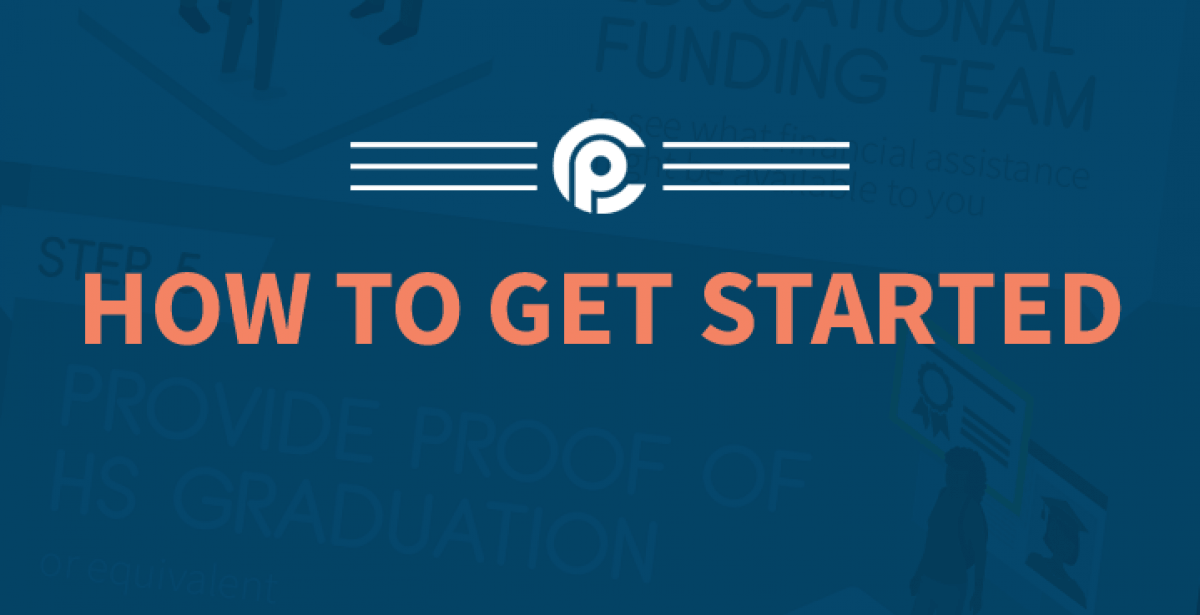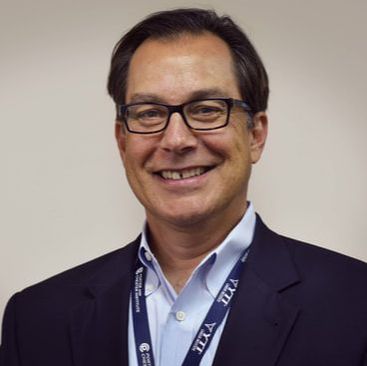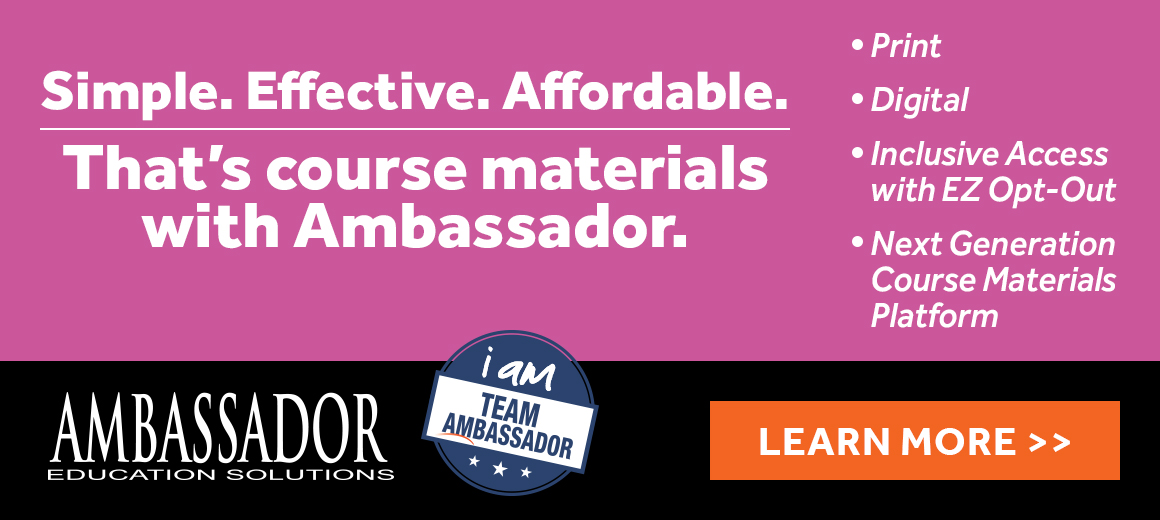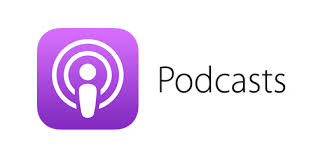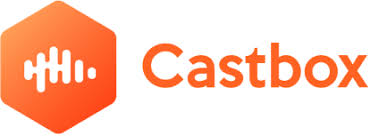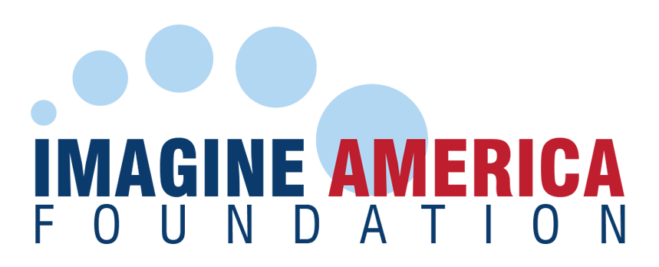Porter & chester institute and yti career institute's reopening plans: Season 2, Episode 11
MORE FROM OUR EPISODE ON Porter & chester institute and yti career institute's reopening plans
CONTACT YTI CAREER INSTITUTE
LocationS
YTI Career Institute – Altoona
3200 Pleasant Valley Blvd,
Altoona, PA 16601
YTI Career Institute – Lancaster
3050 Hempland Road,
Lancaster, PA 17601
YTI Career Institute – York
1405 Williams Road,
York, PA 17402
OUR GUEST ON THIS EPISODE: JIM BOLOGA
Joining us on this episode is Jim Bologa, President and CEO of Porter & Chester Institute and YTI Career Institute.
Porter & Chester and YTI Career Institute operate at over 12 locations throughout Connecticut, Massachusetts and Pennsylvania. These 12 campuses are accredited by the Accrediting Commission of Career Schools and Colleges or (ACCSC). Porter & Chester Institute has been educating tomorrows workforce since 1946 and YTI Career Institute since 1967.
A Message From Our Sponsor, Ambassador Education Solutions:
This episode of Imagine America Radio is sponsored by Ambassador Education Solutions, your school’s go-to partner for simple, effective, and affordable course materials. Ambassador helps schools get print and digital resources into students’ hands quickly and easily.
As more schools turn to Inclusive Access during these uncertain times, Ambassador automates the process for students, enables EZ Opt-Out of Publisher Direct Content, and helps schools comply with DOE requirements. Coming this June, Ambassador is launching its next generation Course Materials Platform.
Don't have time to listen? Read the transcript!
Bob Martin: Joining us today for this episode of Imagine America Radio and to help us sort out the issues, Mr. Jim Bologa. Jim serves as president and CEO of Porter & Chester and YTI. Porter & Chester and YTI have been leaders in implementing very innovative COVID-19 strategies at all of their campuses. And, now, has begun the process of reopening all of these campuses. Jim, we want to welcome you to today’s show. |
Jim Bologa: Bob, thanks very much. Lee, thank you as well. Excited to be here and look forward to this discussion. |
Bob: Thanks. Okay. Let’s start off today’s program with just a very brief overview of what Porter & Chester and YTI have done to respond to the COVID-19. And, more importantly, the reaction to the three different state stay-at-home mandates that you are currently operating under. What have you done? And how have you reacted to those? |
Jim: Great question, Bob. Thanks. Yeah, we’ve been obviously following each of the three states we operate in very closely. I mean, really, on a day-by-day basis. And my team that reports to me, we’ve been having Zoom or GoToMeeting video calls. In the beginning, we were doing it twice a day—in the morning and in the evening. And now, as we’ve sort of moved through this and we’ve gotten into the—I’ll call it the news or regulatory cycle of the COVID-19 process—we’ve been holding Zoom or GoToMeeting calls once a day. And each state has their unique requirements, in terms of the protocols and how they want certain protocols administered. I would say, overall, there’s generally a broad set of infection control protocols that we’re following. Each state is choosing to implement them slightly differently, so we are having to pay attention to those nuances. And as we move through this process—I mean, we’re continuing to get updates, obviously, every day. And what we did originally just, I think, provides some historical basis—is when the COVID-19 pandemic started, it was really the week of—for us, at least—it was the week of March 9th. And then coming into the week of March 16th, we basically brought all the students on campus on that Monday, in all three states. And then transitioned to online learning, remote learning, on Tuesday, March 17th. And then we continued that throughout the balance of the term. |
And then, to the extent that we could manage any sort of industry-modeled lab environments or clinical environments, we continued to try to do that. But during that time, many of them were starting to shut down. At least, in terms of our on-campus industry-modeled lab environments, we closed those on the 17th as well. Prior to that, what we were trying to do was, we were trying to get the students into their experiential learning back in, sort of, late February, when this started to really emerge as something that was going to require a full campus closure. So we brought students into the online environment through our LMS and helped get all the students to transition to that environment and, again, we also had to get our faculty and staff up to speed as well because we moved the whole operation effectively online and closed our campuses. And once we closed our campuses, we actually have an external cleaning crew. They came in and actually cleaned the campuses. And then the campuses sat idle, really, for almost three months now. And as we’re starting to reopen, we’re going through a cleaning process and following each state’s recommended guidelines in terms of cleaning. So, it’s been a long journey and we’re—we’ve learned a lot and we continue to learn a lot. We’ve been in communication with students and their families and, obviously, all our other constituents—whether it’s regulatory bodies and trying to work through situations where students that require clinical direct patient care through a clinical experience, trying to get relief from the oversight bodies that govern those areas, either using some form of simulation or some other virtual experience that would mimic that real-life experience. And I would say that some of the agencies have been a little bit more receptive, and others not so much so. I think we’ve been just trying to maintain a balanced perspective. Obviously, some students are frustrated because they sort of set in their mind that they were going to graduate on a certain day and COVID came and obviously altered their plans, and they really want to get into the workforce. So we’re working through all those things. And again, just trying to—we’re trying to communicate to the best of our ability with clarity. And as you both know, I mean, every day sort of brings a new adventure in terms of a new policy or a new procedure that we just need to make sure we understand it and then we’re able to integrate it into what we’re doing. |
Lee Doubleday: Yeah. And Jim—this is Lee. I’m talking to Jim Bologa, president and CEO of Porter & Chester and YTI Career Institute. Thank you for explaining what it is that you guys have done. And I commend you on how quickly you guys were able to adapt to the current environment and how much attention was given to the safety of your staff and your students. So, thanks for explaining all of what you’ve done. But the purpose of today’s episode is to talk about or to inform our listeners of your reopening strategy. I’m going to assume that this is going to vary state by state. But can you explain sort of what the overall reopening strategy is—and this is something that’s going to be broken into stages, and which states are you going to start with? So can you kind of just explain the reopening processes and how that’ll work? |
Jim: Yeah, yeah. So we were afforded the opportunity in the State of Connecticut to open on Monday, June 1st. And so we started—we were able to start bringing students back to work in the lab, the lab environments. The clinical sites that we partner with are coming back online, predominantly in the health care arena. However, they are a little bit slower in terms of bringing students and a faculty member back onto their location sites. And so we’ll start with having them open about a week or so ago now. And, basically, what we did was we had our maintenance teams come into our campuses and we structured the flow of the building by setting six-foot markers on the floor with arrows and directing traffic. We’ve also put up hand sanitizer dispensers throughout the facility. We’ve also put up all the requisite signage, if you will, with regards to good infection control protocols, whether it’s washing your hands for 20 seconds, not touching your face, wearing a face mask, social distancing. If you do have a mask off for whatever reason and you cough, you cough into your elbow, your sleeve. So we’ve tried to highlight those infection control protocols by making them visual for our students. |
And then as students were coming onto the campus, we had a—I will call it an ambassador who basically explained the rules of the road, if you will, in terms of how traffic was to flow on the campus, depending on where your lab was at, and what the protocol expectations were. As you entered the building, again, in Connecticut, there were certain things that we needed to ask the students, which we asked them. And, again, going through that process differs state by state. But, again, it’s greeting the students at the door; having them sign in (time, date); asking them some questions that we’re required to ask and then getting an affirmative acknowledgment to that; and then explaining to them how things are going to work once they’re on the campus. |
And, so, for the most part—I mean, I sat up in one or two of our campuses, and I have to say that our teams were really well prepared. And they did, I think, a very good job in terms of bringing the students back onto the campuses. |
So that was Connecticut. We followed a similar protocol. We are opening and we did open up our Massachusetts campuses and our Pennsylvania campuses yesterday. Again, opened it up to the students that were able to come back to the campus and start their lab work. And so we followed the same sort of protocol in terms of integrating the students back onto the campus, following the traffic flow that we’ve designed. Following the six-foot markers in terms of keeping the distance. And all the other requirements around mass and basically just telling the students, “Look, you need to follow the rules. This is how we’re going to keep all of us safe.” |
And so Massachusetts and Pennsylvania opened yesterday. The reports I got back yesterday were that everything went well and we were able to get students back onto the campus and back into the industry-model labs that we have on our campus, for them to complete their hands-on training. |
Lee: I find that really interesting and really cool. So, what’s sort of come out of this? What’s the opinion of the students? Are they happy that you guys have taken these extra measures? Or what are you sort of seeing as a reaction to any of this? |
Jim: Yeah, no. I think the students are just happy to be back in the lab. I mean, many of our students have spent the last six weeks online learning the material. Now they are in the labs. And this is really what resonates for them. They are now able to practically apply the theory that they’ve been learning in a real-world setting. So whether you’re bending conduit or installing some pipe for a toilet or refrigeration or you’re soldering a compressor, an HVAC, or taking temperatures, or doing dental work, or any of the programs that we offer. I mean, the students are happy to be back on campus. I was able to walk around to a couple of the labs and poke my head in and ask how everybody was doing, and I think a lot of the students—at least my impression was that they were glad to be back to trying to get back to normal and being on campus. So I think there was a bit of comfort being able to be on campus, see the people that they’re familiar with on campus, and that was sort of my takeaway as I walked around to several programs. And I think that for a lot of folks, this three-month sequester period we’ve been through—I mean, I think a lot of folks have a bit of cabin fever and I think they’re very happy to be trying to return to some form of normal, even though that new normal is going to be different. |
Lee: Yeah, I think we’re all feeling that way at this point, and I’m sure they’re also comforted by the fact that it seems as though you’ve taken extra measures to make sure that they’re safe. And that kind of leads me into my next question, which is what procedures are your campuses in place to make sure that classrooms are effectively cleaned for a safe learning environment? |
Jim: Yeah. I mean, basically, what we’re doing is, again, we’re scheduling, we’re having to really rejigger, if you will, the actual schedules so that we’re able to maintain the appropriate student to faculty number ratios that we’ve outlined either in our internal documents or what’s been prescribed by the states. So as a result of that, we do have our cleaning crews, our external cleaning crews, coming on the campuses to make sure that the campus environment is remaining clean. And, again, I think one of the things that we’ve also advocated to our faculty, staff, and our students is that—much like when you go to a gym and you use a machine, you are generally are encouraged to wipe it off before you get on it and wipe it off after you get off it—we’re really encouraging that sort of self-awareness of just making sure that your environment is clean to the extent that you can help us in that process because, again, we’ve been advocating to the students and the faculty and our staff we’re all in this together so it’s up to us to practice good hygiene and it’s not something that we can just take for granted anymore. We really need to be vigilant and diligent in doing it all the time. |
Lee: Right, right. Okay. I have one last question before I turn things back over to Bob. Let’s say that I’m a student at Porter & Chester or YTI Career Institute and I’m uncomfortable physically attending the class as of right now. Is there still an online option for students who may not feel completely comfortable coming into the campus physically? |
Jim: Well, I mean our programs are designed to be about 50%, we call it theory, which can be done online, and in the balance, the other 50% is generally hands-on in our industry-modeled labs. What we have done and we continue to do—I mean, this is a part of I think the innovative thinking that we’re trying to bring to the table here—is that we are trying to find simulation software, where we can mimic real-world experience. I mean, you can watch simulations and you can participate in them, but obviously to really perfect a skill or a competency, you really need to be able to view it and do it—do it many times and do it often, and obviously have the coaching and the observation that goes into getting good at your skill or your craft or your competency. So students who, for whatever reason, might be compromised we are—what we’re trying to do—we are trying to figure out ways to accommodate them, whether it’s coming onto the campus when there’s virtually no one around, if you will. But by and large, we’ve not gotten a lot of students who’ve said, “Hey, I don’t want to go back.” If anything, we’ve got students who are asking us when can they get back onto the campus to do their practical experiential learning, or, “When can I get back onto a clinical site to complete my real-world direct patient care hours and experience?” So, again, we’re trying to be as accommodating as we can and, obviously, if someone does have a health compromise, obviously we’re going to make accommodation for them to try to get them through their educational experience with us. |
Bob: We’re talking to Jim Bologa, president and CEO of Porter & Chester and YTI Institutes. We’re talking about reopening strategies for his organizations. We’ve covered a lot, Jim—I mean a lot—and I’m coming here with three or four different messages that I want to convey to our audience. The first message is if you’re a student or potential student in Connecticut, the Porter & Chester school opened up on June 1st. If you’re a student or potential student in Massachusetts and Pennsylvania, the Porter & Chester schools have opened up effective June 9th on both of those. And that you’ve gone out of your way, or at least—let’s not say out of your way—you have gone over and above to make sure that the facilities have been cleaned off, ready for these students, and the policies and procedures are in place to help them effectively transition back into their education. You’d created your ambassador program is one very, very good example. Jim, before we close is there anything else that you would like to cover—or, more importantly, would you like to give our audience an idea of where they might want to go if they just want to get more information on either one of the organizations that you run, Porter & Chester and/or YTI? |
Jim: Yeah, sure. Thanks, Bob. So if you’re a potential student or a prospective student—whether you’re a 2020 high school graduate, not sure about your future, or you’ve decided to take a different route or make a different decision given that traditional higher ed is still grappling with the on-ground residential aspect of going to traditional higher ed—I would encourage any prospective student to go to porterchester.edu. We do have classes starting Monday, July 20th, in Connecticut and Massachusetts. And, again, whether you’re a recent high school graduate—2020 graduate, whether you lost your job and maybe you were working in a retail or the restaurant industry, or any sort of hospitality or travel leisure—those were the hardest hit. If you’re looking to take a different career path, come to check us out. I think one of the things that I shared with lots of folks, or tried to share with lots of folks, is that many of our graduates who have moved through our programs were deemed to be essential workers by many of the governors in Connecticut and Massachusetts. So, in talking to some of the students from time to time, they were all employed during the sequester period. So that’s Connecticut and Massachusetts. In terms of Pennsylvania, Pennsylvania: any prospective students again, high school 2020 grad, somebody who’s in transition for whatever reason—whether it’s unemployment, career change etc.—YTI.edu is a website; you can schedule a virtual interview and tour. You can apply online. We’re trying to make the admissions process and the related enrollment aspects of it as easy and efficient for prospective students as possible. And I would say that one of the things that we are excited about is during this time, we actually, in our Altoona campus, we did get our respiratory care therapy program approved to move to a what I call a more blended or hybrid program, whereby a prospective student could take the lecture portion online, and that’s about 75%—70 to 75%—of the total hours are online. And then what we would do is, the student needs to spend about 25% of the remaining time with us in a clinical setting, where they get their hands-on education and training further honed and refined. And what we’ve done is we’ve expanded that program out because it is online, and it allows us to work in various communities whereby students can find, with our help, find a clinical site where they can do their practical experience. So, we have students from New Jersey and Maryland and a few other states expressing interest in taking our program. So one of the things, for us, that’s come out of this is that we are looking at our programs moving to more of a hybrid sort of delivery model largely because we believe that (and I believe that) we’re going to sort of be in this social distancing sort of period for a while, and again we’re continuing to sort of evaluate how we deliver our education. |
Bob: I really appreciate that clarification and that update. Today’s guest has been, on today’s show from Imagine America Radio, Jim Bologa, president and CEO, Porter & Chester and YTI. We want to commend Jim’s leadership during the recent COVID-19 crisis and his support for the Imagine America Foundation. We also want to thank today’s audience for taking time out of their very busy schedules to listen to today’s episode of Imagine America Radio. On behalf of my colleague, Lee Doubleday, and myself, we hope that you’ll be safe and we look forward to talking to you all again very soon. Thank you and goodbye. |


